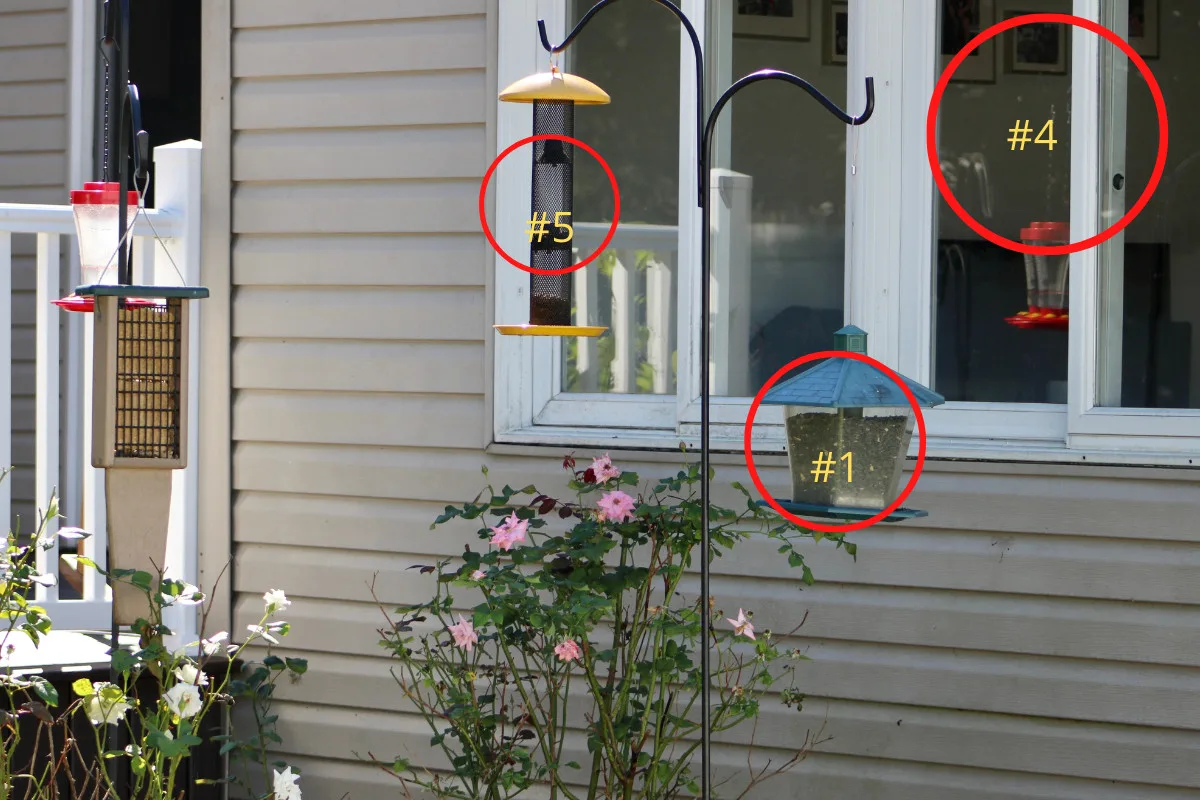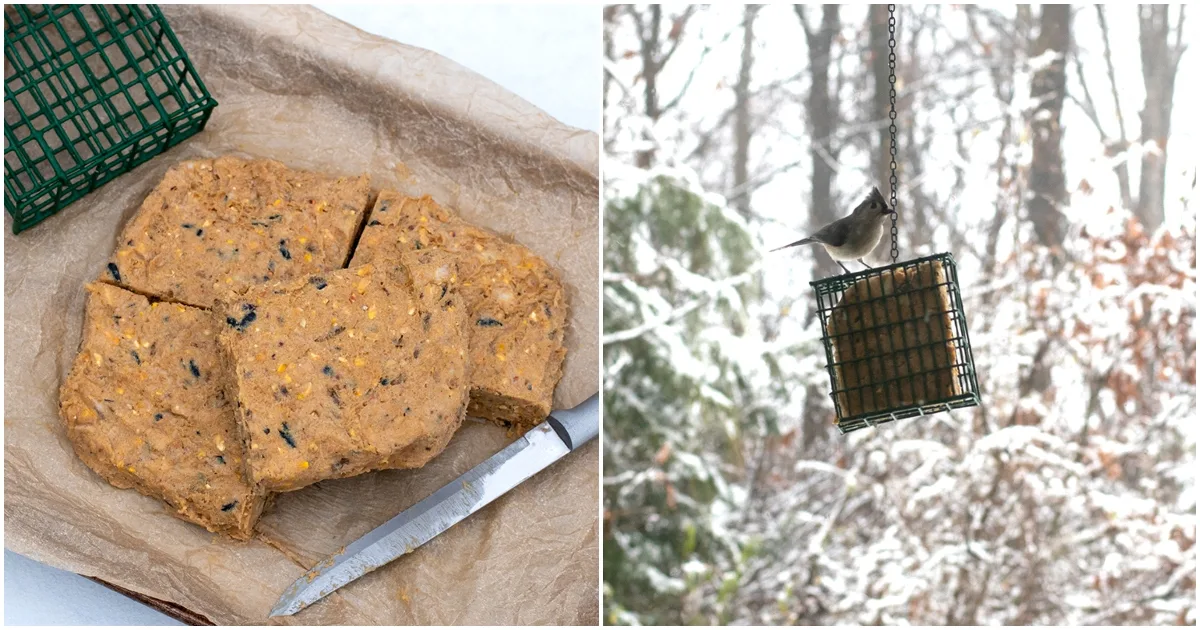
Setting up suet feeders is a great way to attract birds to your backyard. With their high metabolic rates, these tiny creatures need high-fat food content.
Think of how quickly they move and the energy required for all that flitting about, compared to their overall size, and it’s no wonder they consistently need high-energy food sources to keep them going.
Most of the seeds in commercially available birdseed blends are high in fat; sunflower, safflower and nyjer.
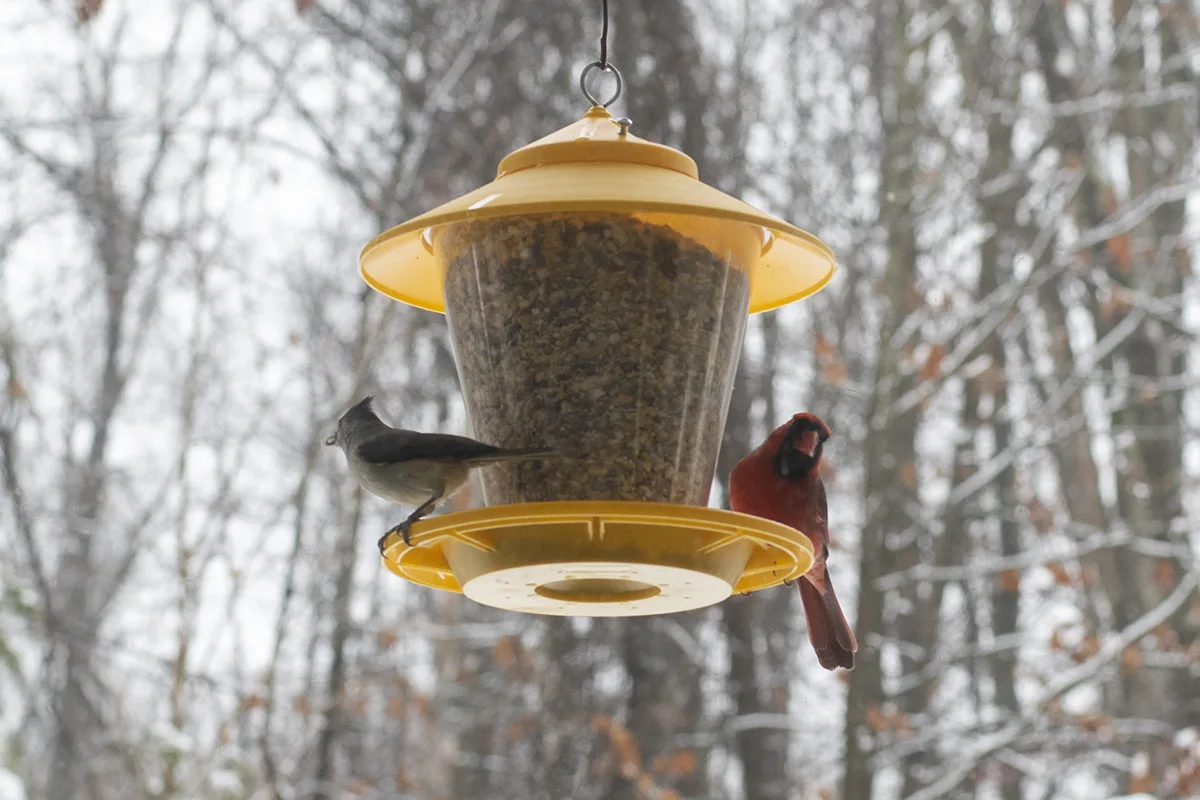
Suet feeders allow birds access to quality high-fat foods, such as lard, tallow (birds easily digest animal fats) or nut butters. (Check out Cherly’s excellent tutorial on how to render tallow.) Access to high-energy foods is especially important in the cold months when other natural food resources are scarce.
For a quick and fun project, you can easily make your own suet cakes at home.
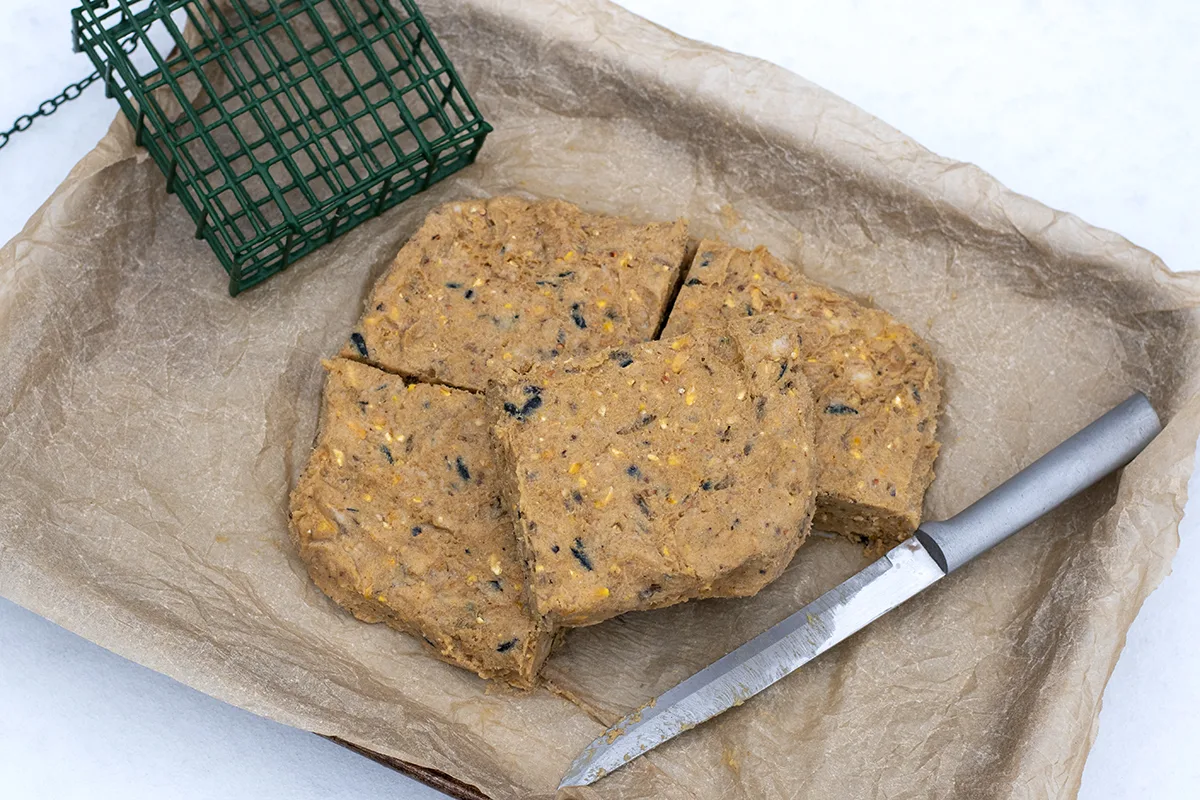
Plenty of commercially made suet cakes are available, but making your own means you can control the quality of the ingredients and choose your own extra additions to attract specific types of birds. Plus, they’re fun to make. (I mixed this batch up on the back porch in the snow!)
These suet cakes use a base recipe that only requires four easy-to-find ingredients.
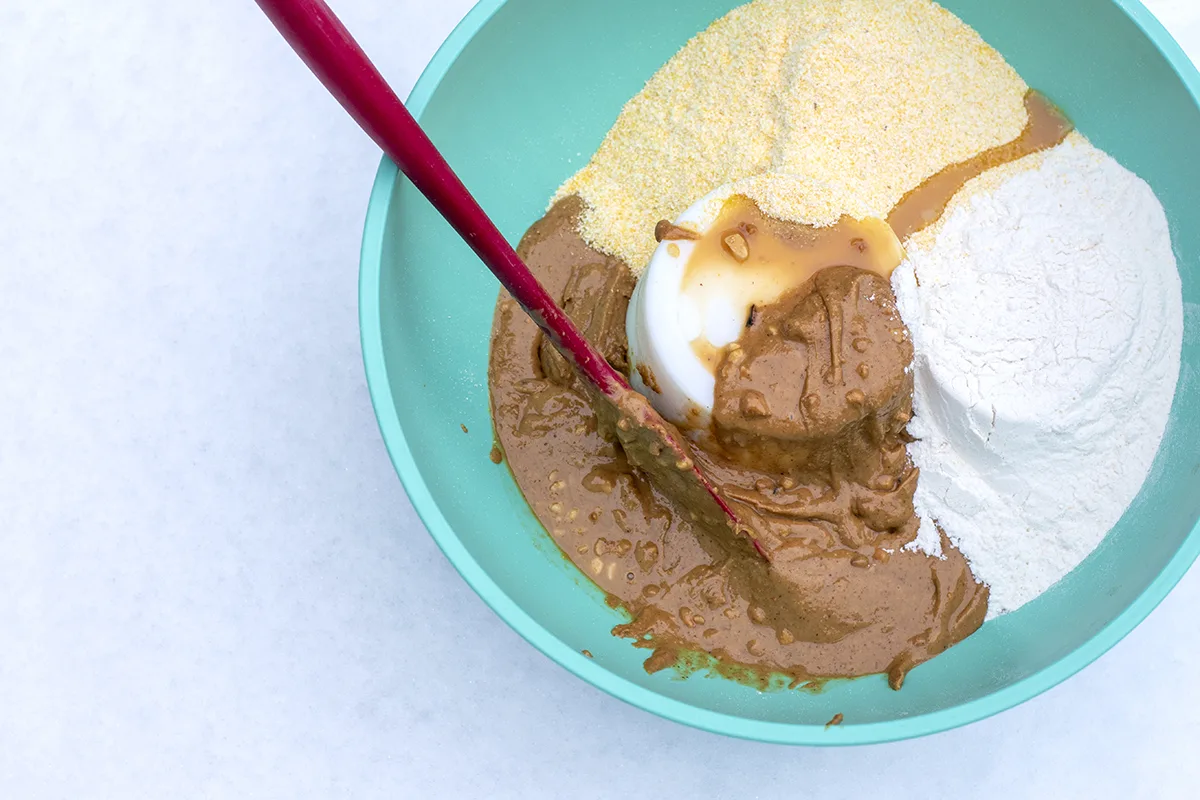
You might already have them in your pantry. But you can add extra ingredients to make the cakes more appealing. Keep them as simple as you want, or go all out and make up a deluxe suet treat.
I sliced mine into squarish rectangles, but you can easily roll these into balls or other shapes to fit whatever type of suet feeder you have.
You can even smash some of the mix into cookie cutters and freeze them to make hanging suet treats in the winter. (They’ll melt in the warmer months.) Don’t forget to make a hole for a string before you put them in the freezer.
What Types of Birds Like Suet?
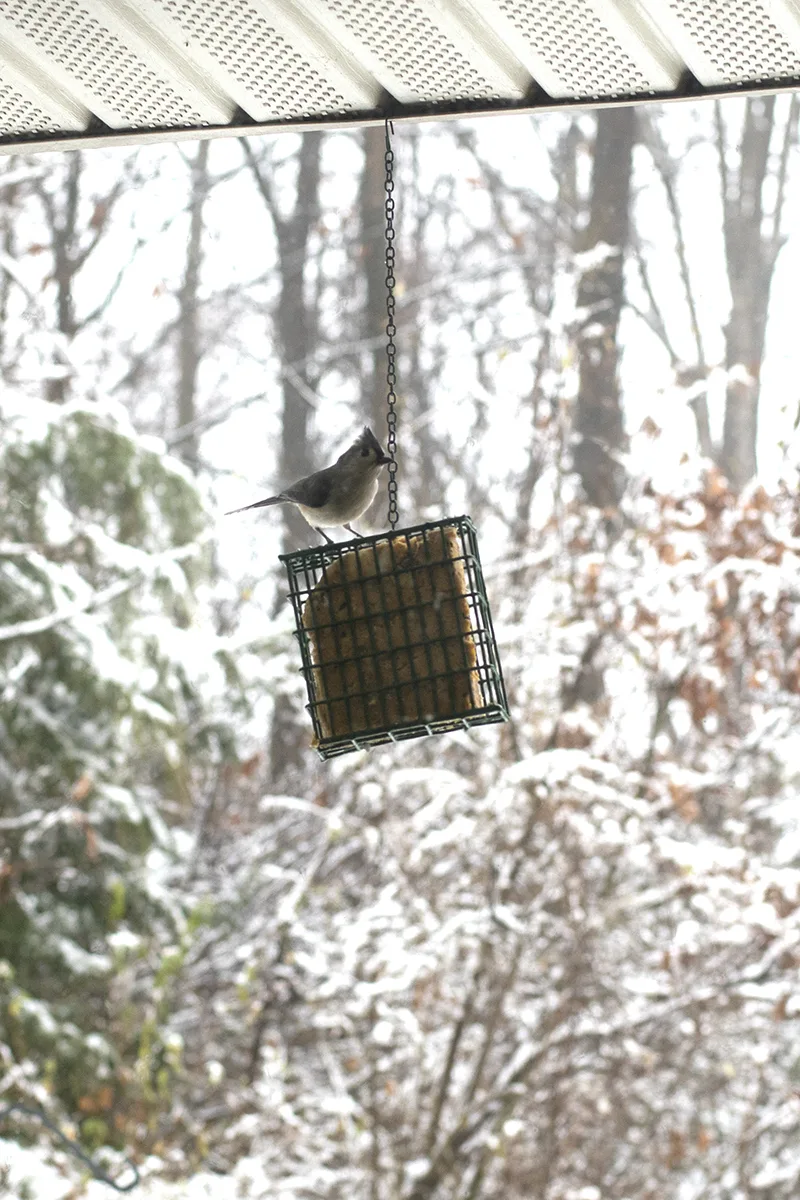
Quite a few birds appreciate a suet feeder. You’ll likely find nuthatches, chickadees, flickers, woodpeckers, blue jays, wrens, goldfinches, titmice, cardinals and brown thrashers.
Be patient if you’re just setting up your feeder and don’t see many birds visiting. It can take a while for word to spread among the feathered folk in your area where the good food is. Once you get regular visitors, keep your suet feeder filled; otherwise, you’ll have to start the process all over again. It’s a good thing you can make several batches and freeze them.
Skip the Suet During the Hotter Months
We take our suet feeder down in the summer. By this time of year, plenty of natural food sources are available to the local bird population. And the heat causes the suet to melt, or worse, go rancid, causing a mess to clean up that’s no longer good for the birds to eat. It’s better to keep suet out during the cooler months of the year.
Add-Ins
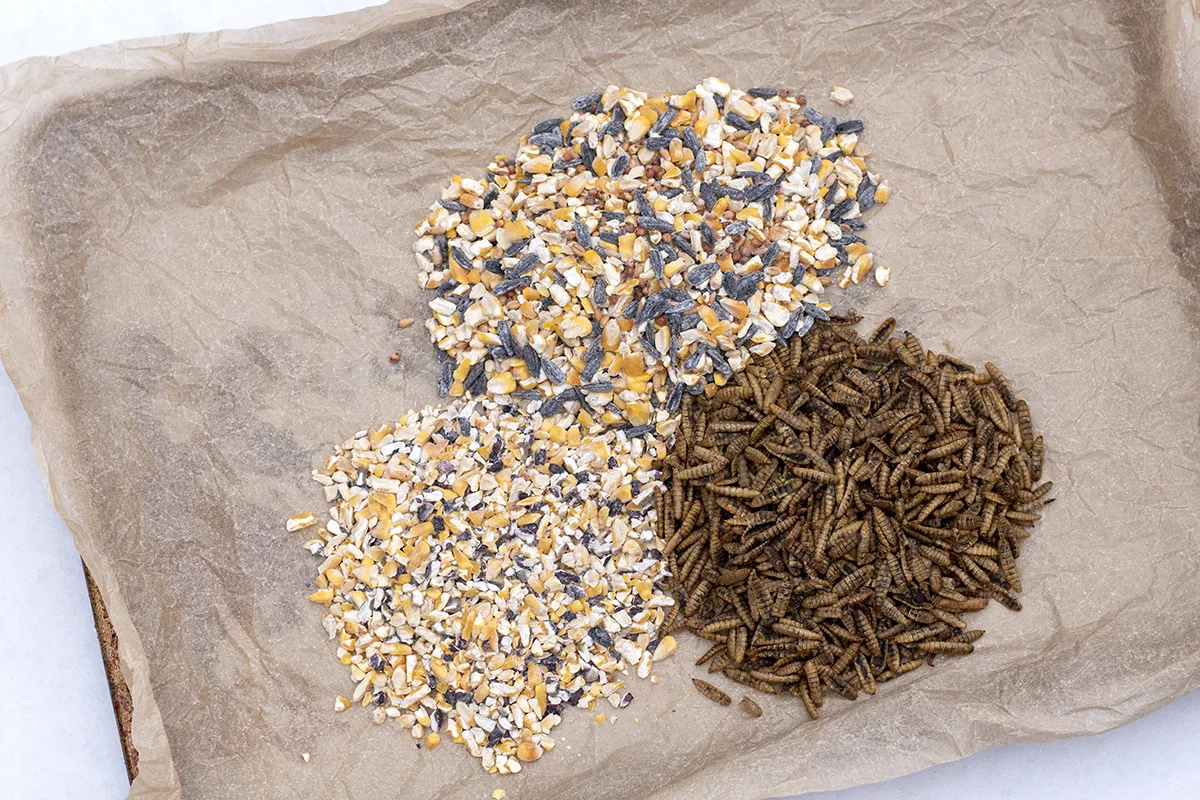
You can make this suet recipe up as is or mix in a few of these add-ins for extra energy and to make the cakes more appealing. Using a few add-ins will also give you a sturdier block of suet that will hold its shape better.
- Raw, unsalted peanuts
- Cracked corn
- Sunflower seeds or hearts
- Your favorite wild birdseed blend
- Dried fruit pieces such as apples, blueberries or cranberries (no sugar added)
- Dried mealworms or black soldier fly larva
- Scratch Grains
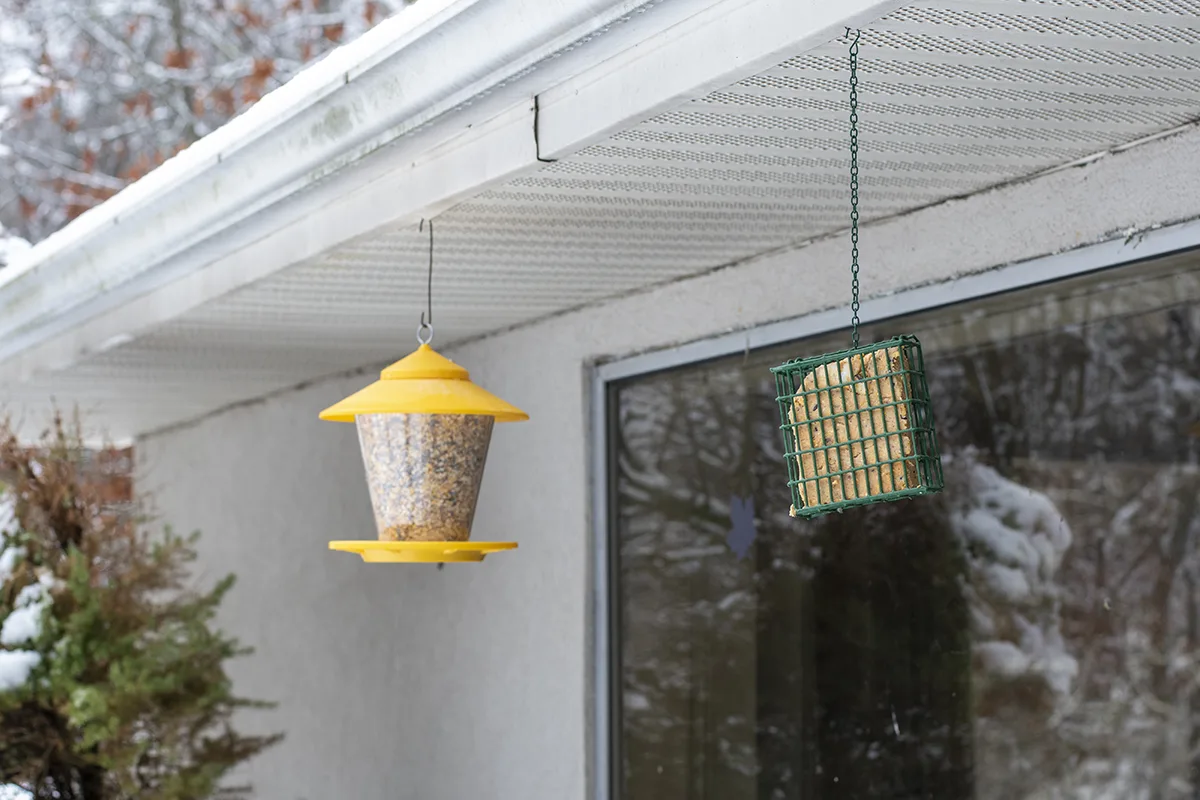
Squirrel-Proof Suet Cakes
To keep squirrels out of your suet, mix in a tablespoon of red pepper flakes to a batch of suet. The birds can’t taste the capsaicin, so it doesn’t bother them. But the squirrels sure don’t like it.
4-Ingredient DIY Suet Cakes
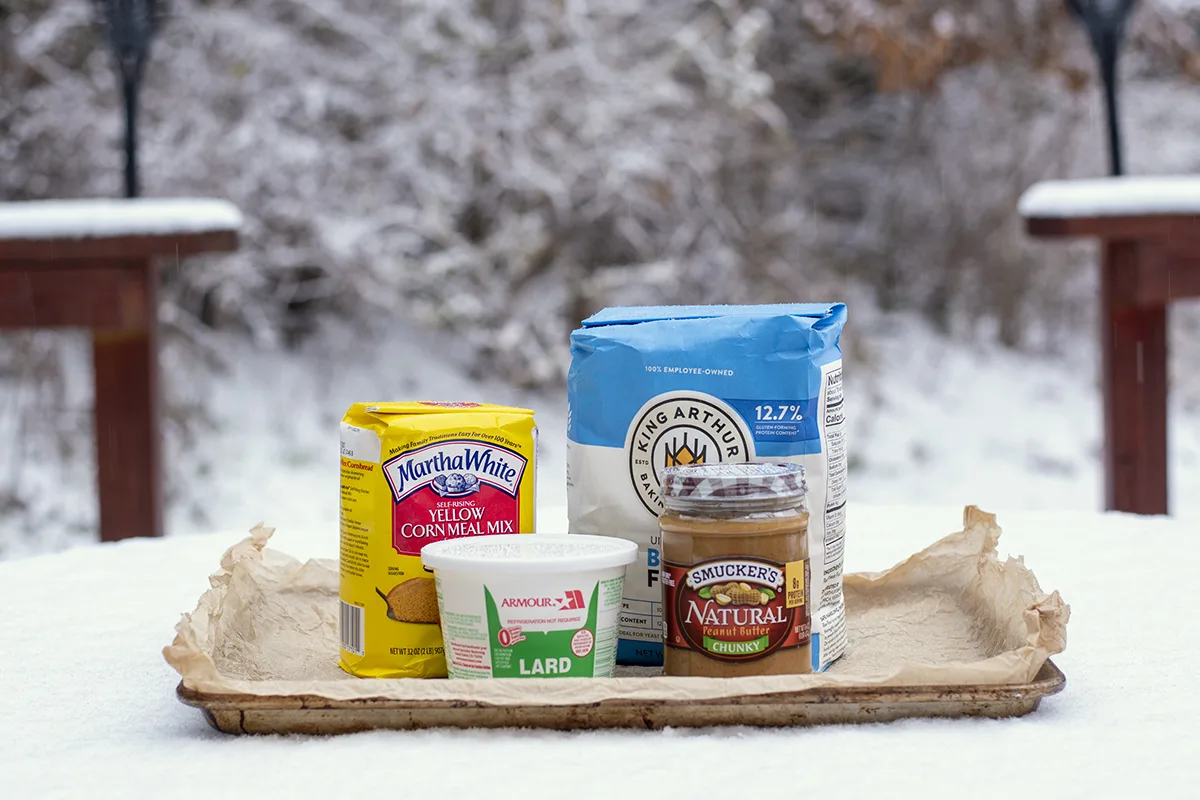
- 16 oz lard
- 16 oz natural (no sugar added) crunchy peanut butter
- 1 cup of cornmeal
- 1 cup of flour
- 2-4 cups total of your preferred add-ins
Tools
- Large mixing bowl
- Gloves (optional, but makes the process less messy)
- Wax or parchment paper
- Baking sheet
- Knife
Directions:
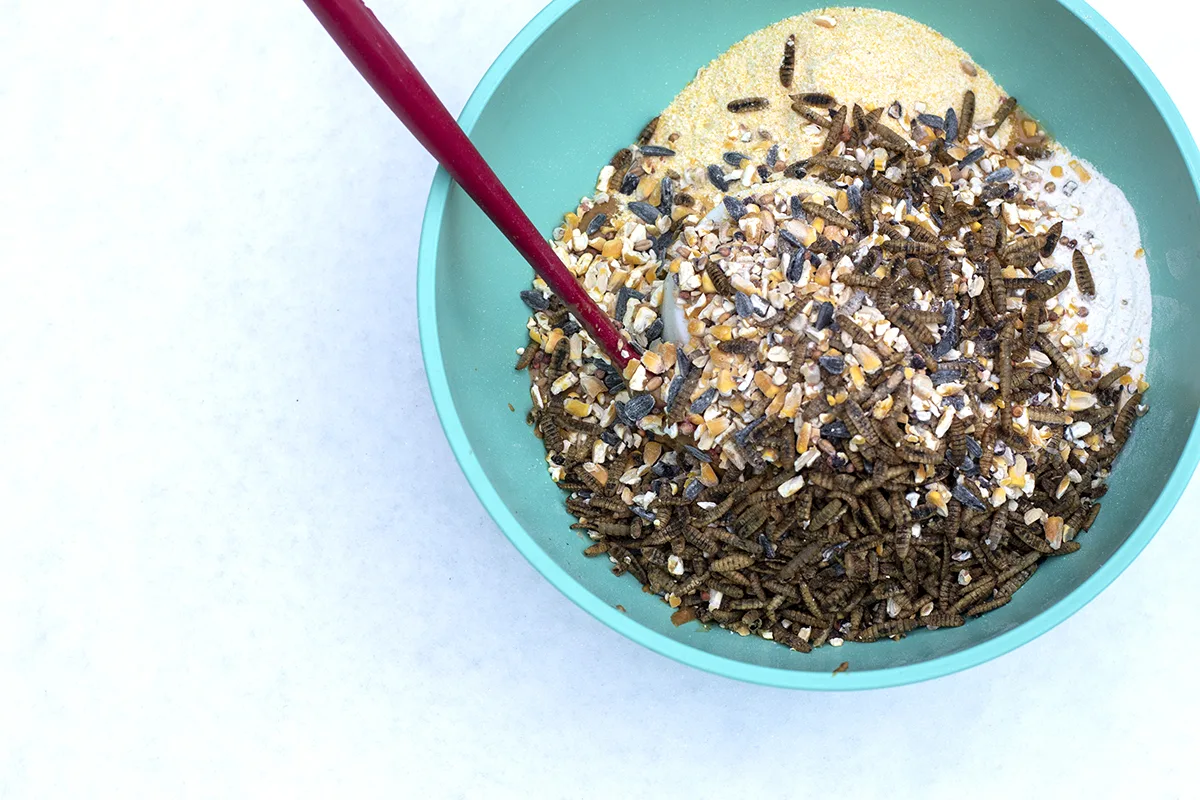
- In a large mixing bowl, add the lard, crunchy peanut butter, cornmeal, flour and add-ins. Using your hands, mix everything together and incorporate all the dry ingredients well.
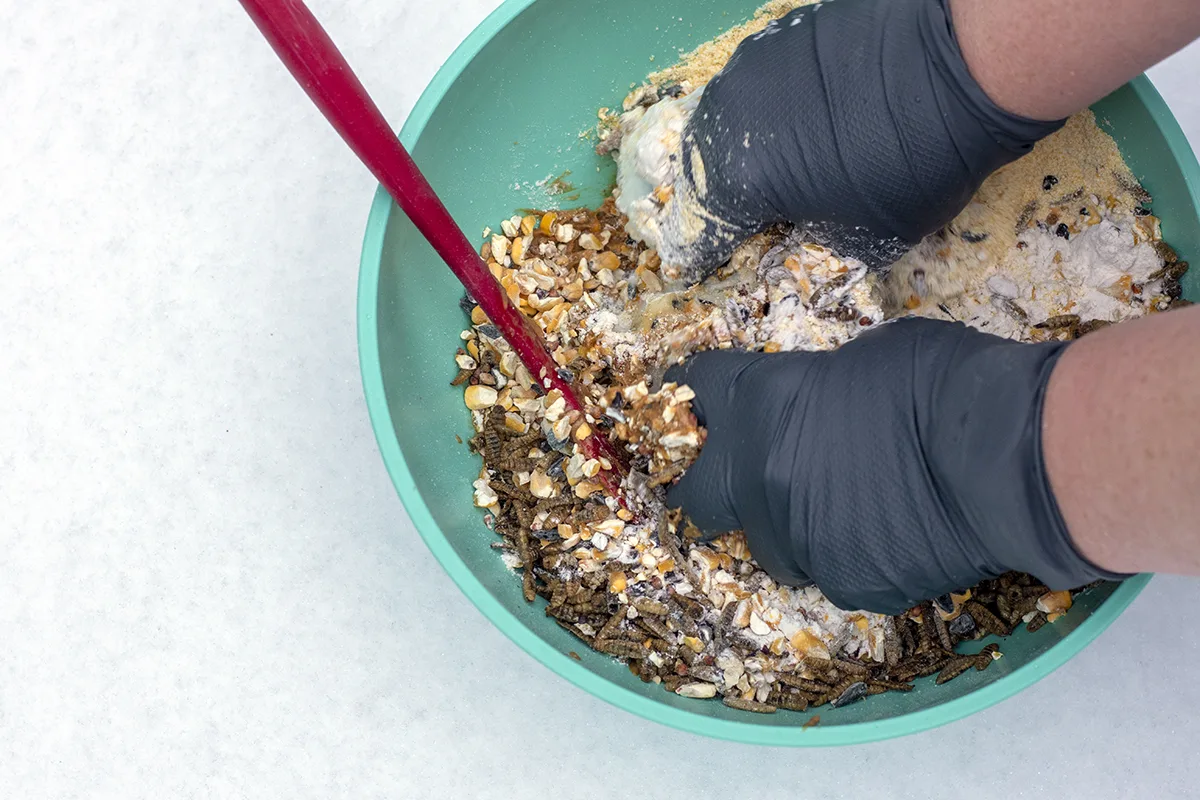
- Don’t worry if there are chunks of lard that aren’t perfectly mixed in. Overall, you want to make sure the cornmeal and flour are mixed throughout to help hold everything together. In the end, you should have a nice sticky ball of suet dough.
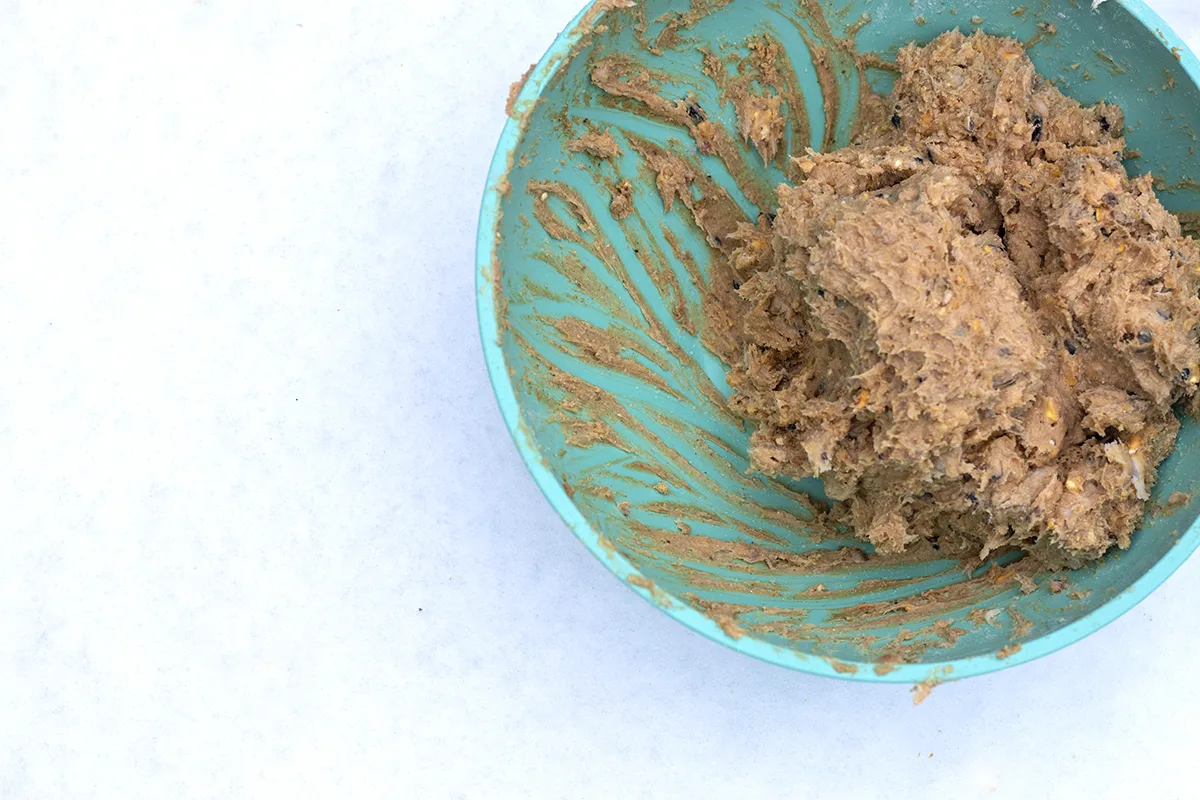
- Transfer the dough to a wax paper or parchment-lined baking sheet. Squash the suet dough flat and form it into a rectangle, keeping in mind the size of your suet feeders and how many blocks you can cut from the rectangle. I have a standard suet basket, and this recipe easily made four blocks that fit the feeder perfectly.
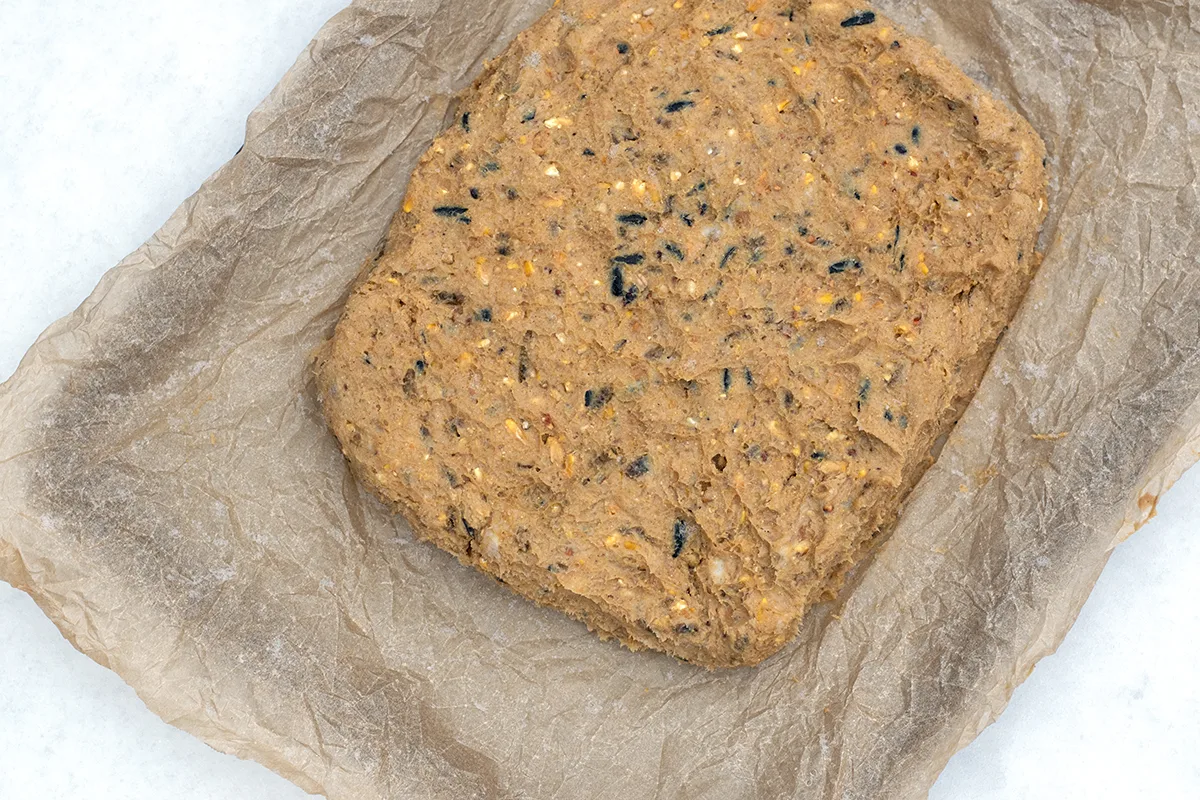
- Place the baking sheet in the freezer for 2-4 hours.
- Remove and slice the frozen rectangle into individual cakes.
- Wrap the remaining suet cakes in wax or parchment paper and keep them in the freezer or fridge. The suet cakes will keep in the freezer for six months and in the fridge for two weeks.
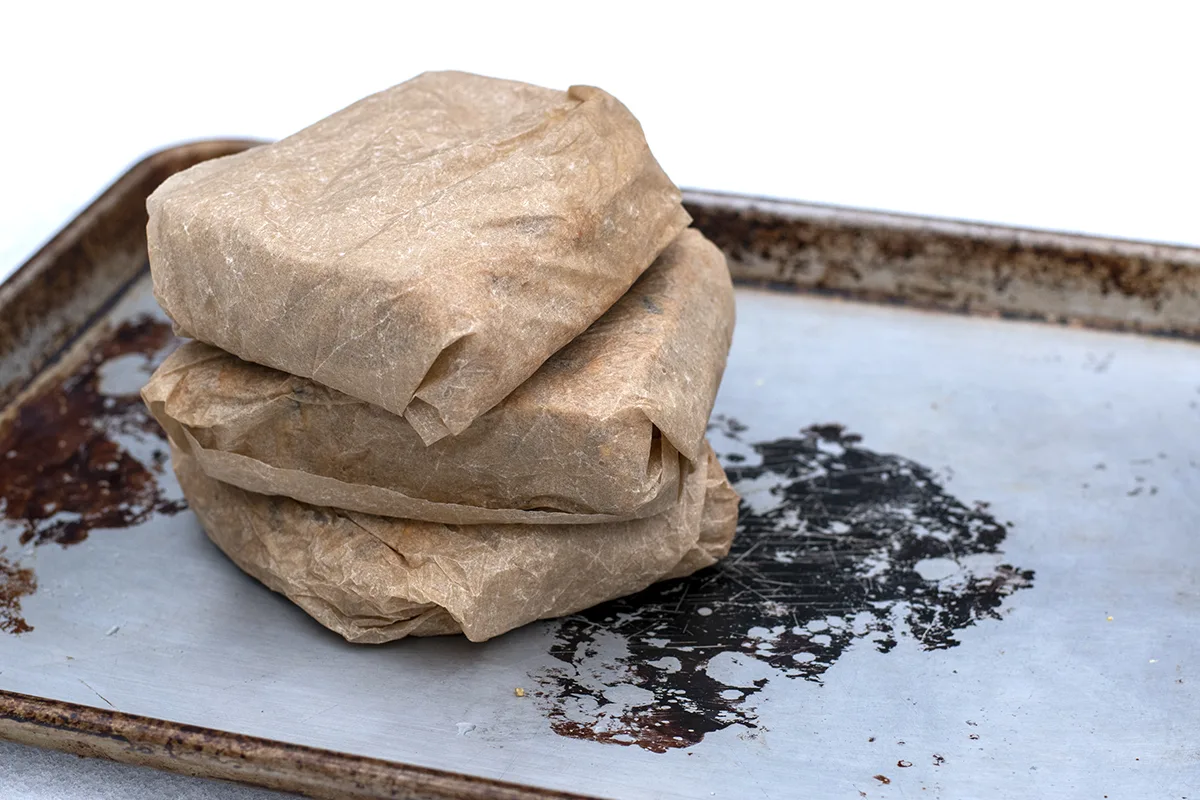
If you freeze your suet cakes, you can thaw them in the fridge for a day before putting them in the feeder. While this isn’t necessary, during the coldest months of the year, your birds may appreciate it.
And that’s all there is to it. Making these suet cakes takes about ten minutes. Get creative and try different combinations of add-ins to see what’s popular with the birds in your area. If it’s especially cold out, mix up a batch with plenty of cracked corn, which will help raise the birds’ internal body temperature.
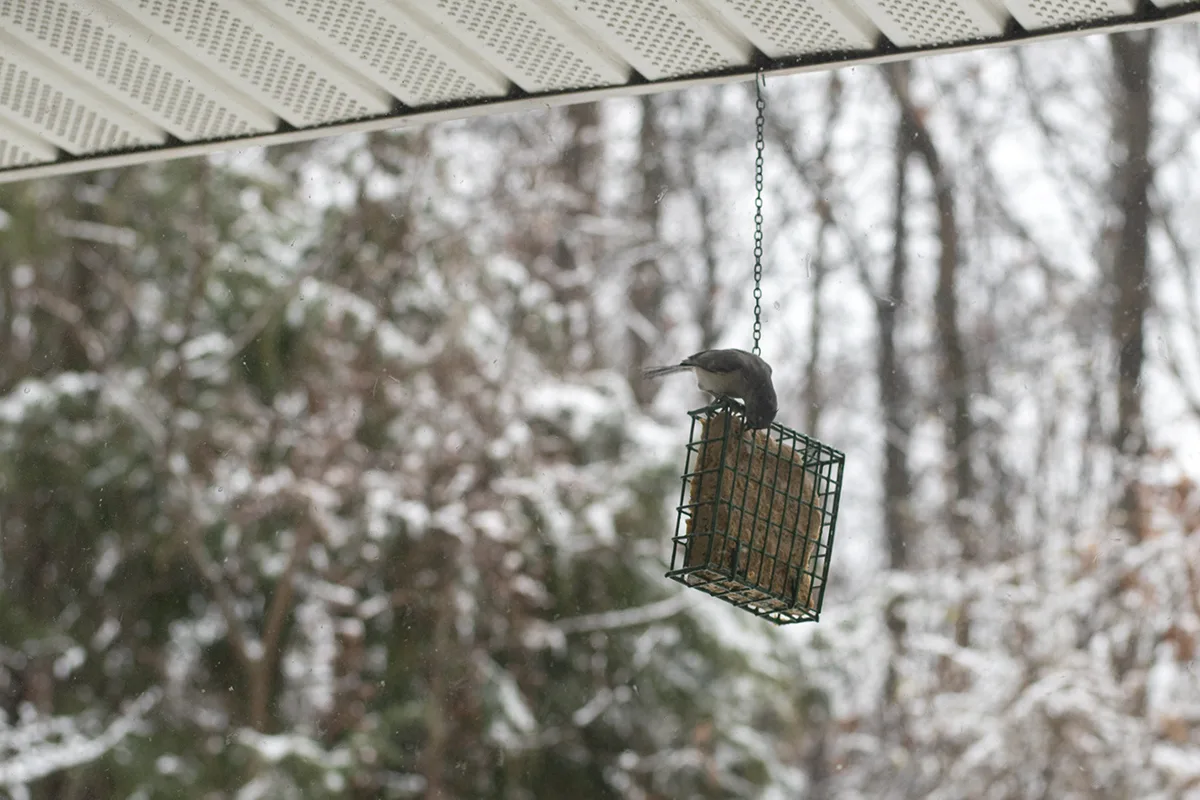
Once you get one suet feeder going, you’ll soon realize the value of having several suet feeders available to your feathered friends. And with this quick and easy recipe, you’ll have no trouble filling them. Just be sure you have the binoculars and your bird guide handy!
Read Next:

Get the famous Rural Sprout newsletter delivered to your inbox.
Including Sunday ramblings from our editor, Tracey, as well as “What’s Up Wednesday” our roundup of what’s in season and new article updates and alerts.



